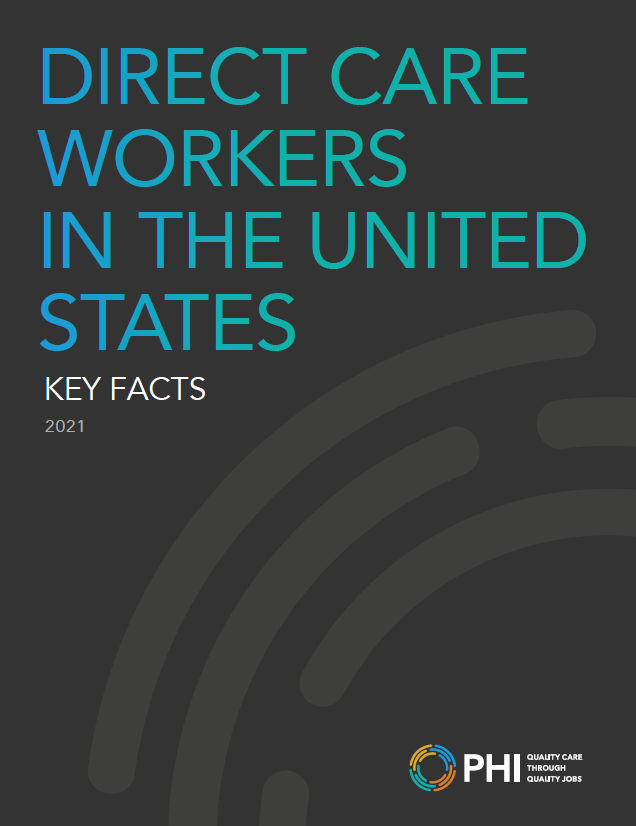
A new report from New York-based PHI pinpoints low wages and job quality concerns among residential care aides as fueling workforce recruiting and retention challenges in senior living. If those jobs are to be transformed, the group says, it will require significant investment from the public and private sectors.
“This data should serve as a call to action to further invest in this essential workforce,” PHI President Jodi M. Sturgeon said.
In the report, which provides an annual snapshot of the direct care workforce, PHI researchers said that the pandemic highlighted the essential contributions of direct care workers and exacerbated the challenges they face, including lack of access to hazard pay, paid time off, pandemic-specific training, affordable and accessible child care, and adequate personal protective equipment.
All of those challenges are factors that lead to employers losing workers to other industries, as well as those workers exiting the labor force altogether, according to PHI.
“Given the greater attention on long-term care and the direct care workforce generated by the pandemic, now more than ever is the moment to improve direct care jobs and strengthen and stabilize the workforce,” the authors wrote.
Growing demand
At the same time, they said, the demand for residential care aides is growing along with the aging population.
Of the 4.6 million direct care workers in the nation, 675,000 are residential care aides, according to PHI. Those workers are employed as personal care aides, home health aides and nursing assistants who work with residents in assisted living communities, group homes and other residential care settings. Residential care aides are primarily women (81%), people of color (53%) and immigrants (21%).
The population of adults aged 65 or more years is expected to nearly double from 49.2 million to 94.7 million by 2060, the authors pointed out, and the number of adults aged 85 or more years is expected to almost triple over the same period, from 6.4 million to 19 million.
In response to the growing population of older adults, the residential care aide workforce will have one million total job openings by 2029, including 163,100 new jobs created by growth in demand, 418,300 openings created by workers leaving the industry, and 495,600 openings due to workers leaving the labor force.
According to PHI, 54% of all job openings across residential care settings will be residential care aide jobs.
The residential care aide workforce — which makes up 15% of the total direct care workforce — has added 132,000 jobs over the past 10 years, increasing in size from 542,800 workers in 2010 to almost 674,800 in 2020. This workforce is projected to add another 157,100 new jobs by 2029, PHI said.
Challenges
Despite the high demand for residential care aides, wages remain low, and most positions are part-time, according to the report authors.
One in eight residential care aides lives in a household below the federal poverty line, and two in five live in low-income households. Approximately 38% of those workers receive some form of public assistance, and 17% lack health insurance.
Hourly wages for residential care aides have risen over the past 10 years from $12.28 in 2010 to $13.45 in 2020. Nearly one in four residential care aides works fewer than 35 hours per week, whereas 16% of this workforce works more than 40 hours per week.
“Considering the prominent role of private payers and providers in determining compensation and other aspects of job quality for residential care aides, transforming these jobs will require significant investments through public and private channels,” the authors concluded.




